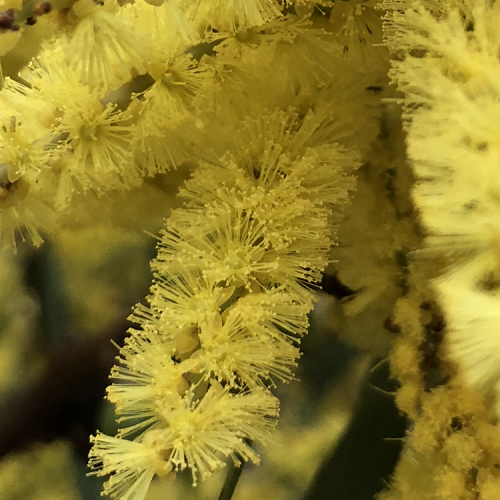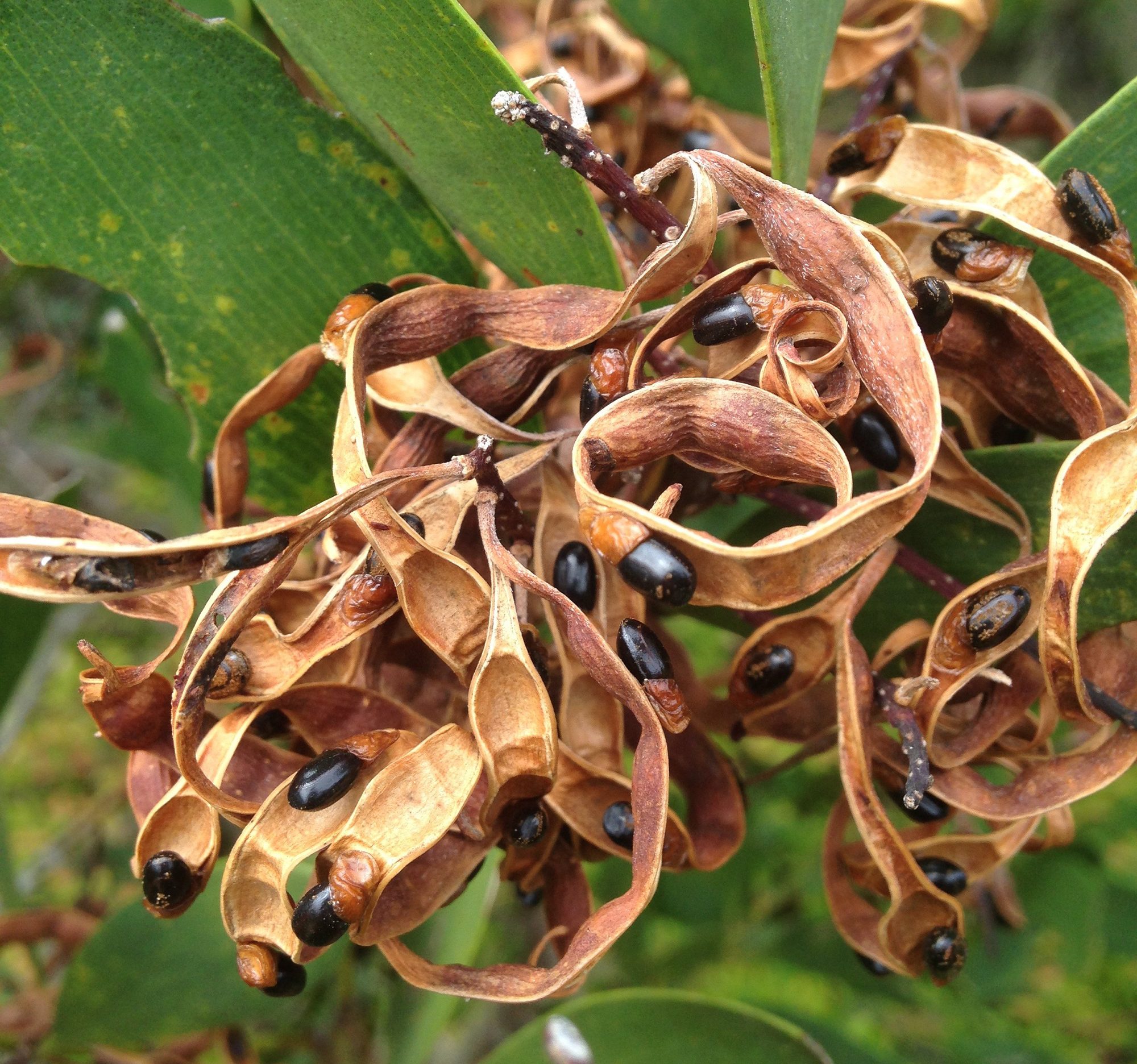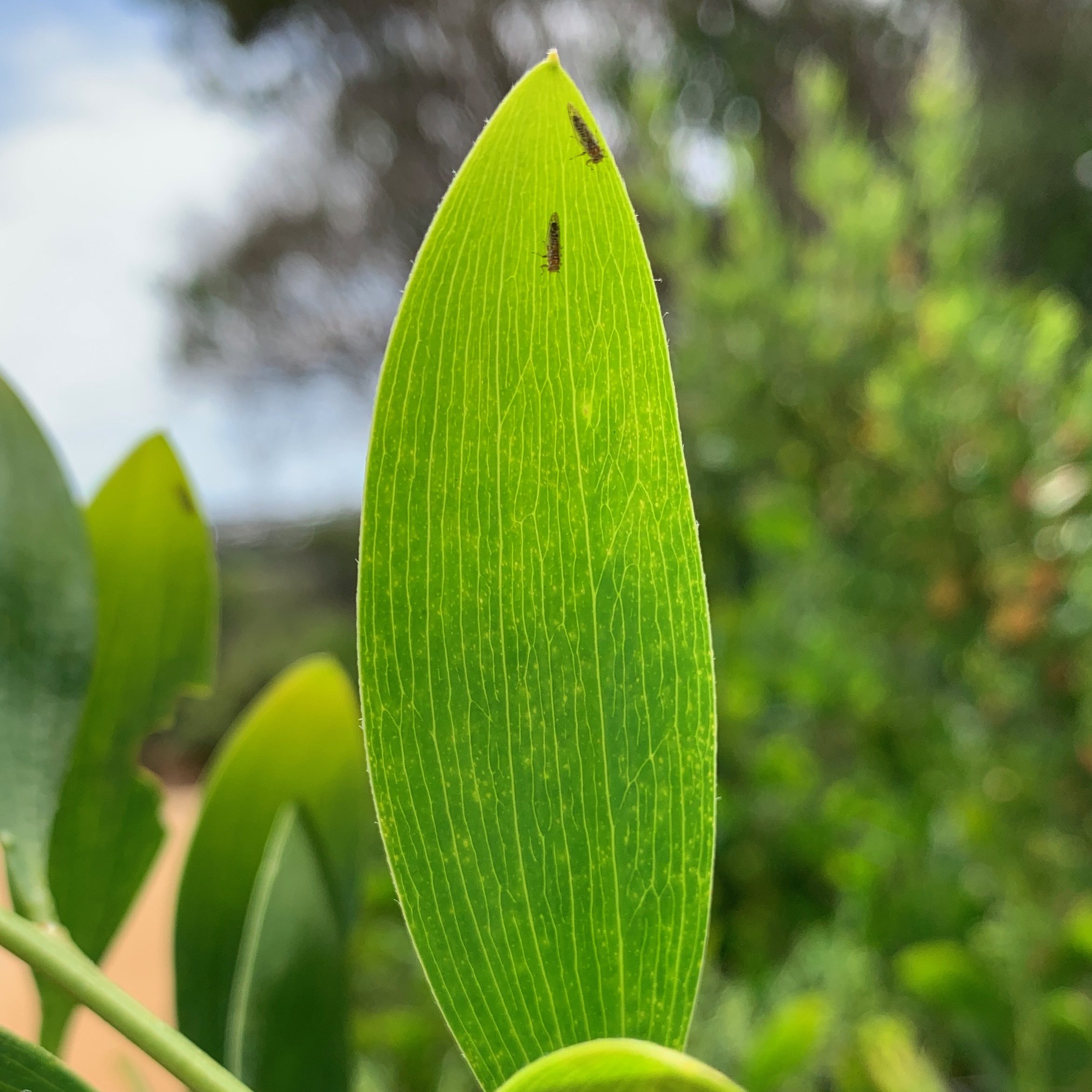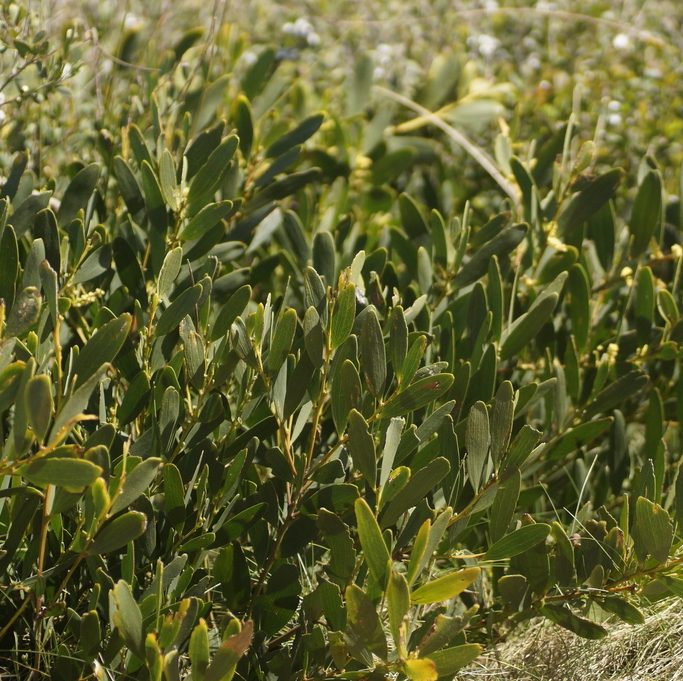Coast Wattle
Scientific Name: Acacia longifolia subsp. sophorae
Wadarurrung Name: garra
Description: The large spreading Coast Wattle has precumbent lower branches running to 4m and sustains little understorey. It provides shelter for small birds. Acacia longifolia has two subspecies one of which is local (indigenous), the other being introduced. The indigenous one is Acacia longifolia subsp. sophorae – or Coast Wattle, the introduced one is Acacia longifolia subsp. longifolia – or Sallow Wattle.
Whilst Coast Wattle at the Bluff is considered indigenous, it has become semi-invasive in ‘modern’ times principally due to changes in fire management (i.e. fire repression) as well as its widespread and enthusiastic movement via the horticultural industry (i.e. plant nurseries and landscapers). It therefore occupies a niche similar to Coast Tea-tree (Leptospermum laevigatum) in which its abundance along the coast and its distribution away from the coast has increased considerably with European land management. It is a traditional food source for the Wadawurrung.
Plant Form: Tree
Where to find: Across the entire Bluff
Foliage: Broad flat dark green leaves to 15 cm long
Flower: Sulphur yellow flowers (spikes)
Flowering: July – October



